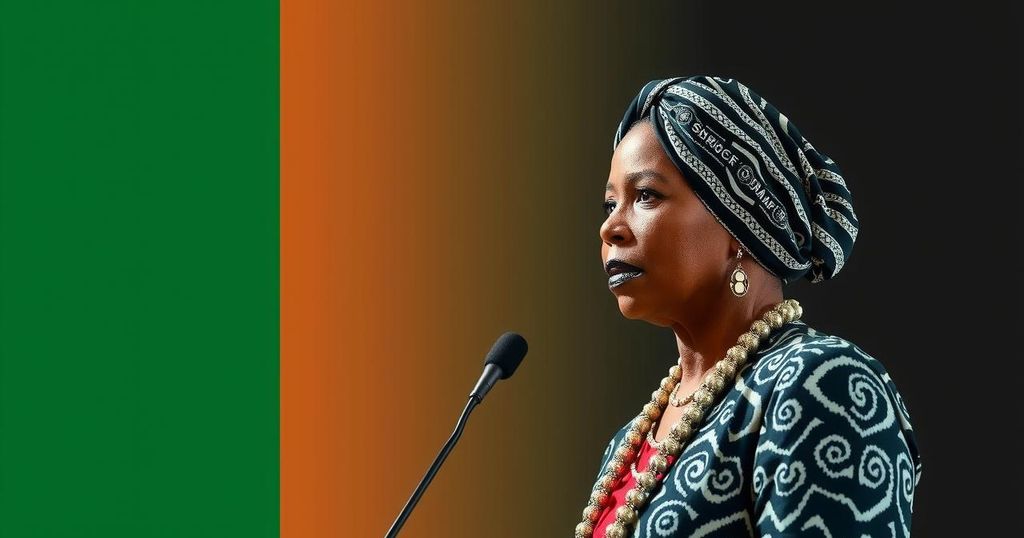Namibia’s Historic Presidential Election: The Potential for Female Leadership

Namibia’s presidential election, taking place on November 27, 2024, could mark the election of the country’s first female leader, Netumbo Nandi-Ndaitwah. As the candidate for the ruling SWAPO party, she aims to address high unemployment among the youth while contending with declining party popularity. The election occurs against a backdrop of significant electoral changes within the region and widespread public dissatisfaction, with over 1.4 million registered voters participating.
Namibia is holding a significant presidential election, presenting a historic opportunity for the nation to elect its first female leader. Netumbo Nandi-Ndaitwah, the current vice president and the candidate representing the ruling South West Africa People’s Organization (SWAPO), is a strong contender. The elections follow a period marked by economic discontent, particularly among the youth, which has eroded SWAPO’s longstanding dominance since independence from South African rule in 1990. While Nandi-Ndaitwah aims to address high unemployment rates and improve job creation, public sentiment reflects a desire for substantial change, considering recent electoral shifts in neighboring countries.
Reports indicate that approximately 1.4 million Namibians, nearly half of the population, are registered to vote. In this election, along with Nandi-Ndaitwah, 14 other candidates, including notable figures like former dentist Panduleni Itula, are in the race. Should no candidate achieve a majority of over 50% of the votes, Namibia may experience its first presidential runoff, a scenario never encountered before. The election comes at a critical time, following the death of former President Hage Geingob earlier this year and the transitional leadership of Nangolo Mbumba. In this context, Nandi-Ndaitwah represents not only a potential milestone for female leadership in Africa but also faces the challenge of reversing the declining popularity of her party.
Nandi-Ndaitwah, who received parts of her education in the then-Soviet Union during her exile, has laid out ambitious plans to stimulate economic growth. She pledges to invest around 85 billion Namibian dollars (approximately 4.7 billion USD) over the next five years to create upwards of 500,000 jobs, a commitment critiqued by some as overly optimistic. Moreover, her campaign underscores issues significant to women, including reproductive rights, healthcare access, and equal remuneration, which resonate with the diverse electorate in a country characterized by vast geography and sparse population densities. As Namibians prepare to vote, these dynamics will undoubtedly shape a consequential chapter in the nation’s democratic journey.
Namibia has experienced significant political transitions since gaining independence in 1990, predominantly under the control of the SWAPO party, which led the fight against apartheid South Africa. The upcoming presidential election is critical not only for determining the country’s leadership but also for addressing widespread public dissatisfaction regarding unemployment and economic challenges, particularly among the youth. The rise of prominent female candidates such as Netumbo Nandi-Ndaitwah elevates crucial discussions surrounding gender representation and the effectiveness of policies aimed at economic recovery and social equity. The electoral landscape is increasingly influenced by regional trends, where traditional ruling parties have faced unprecedented defeats amidst public frustration.
The presidential election in Namibia represents a pivotal moment in the nation’s democratic evolution, with the potential for historic female leadership amidst rising public discontent. Netumbo Nandi-Ndaitwah, as the ruling party’s candidate, is positioned to address pressing economic challenges while appealing to a new electoral constituency demanding change. With a range of candidates contesting and the potential for a runoff, the outcome of this election could redefine the political landscape in Namibia and reflect broader electoral trends across the region.
Original Source: apnews.com







